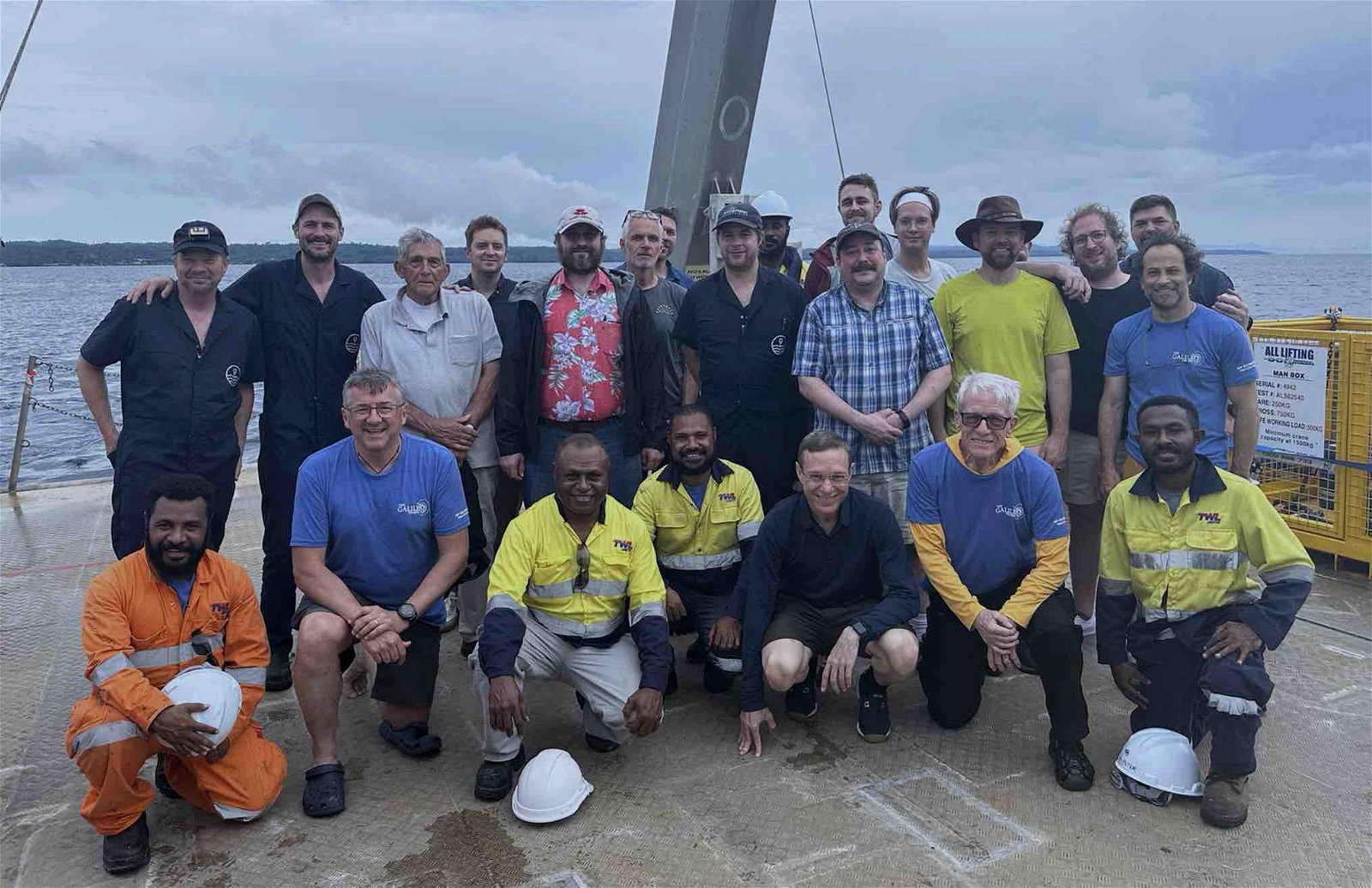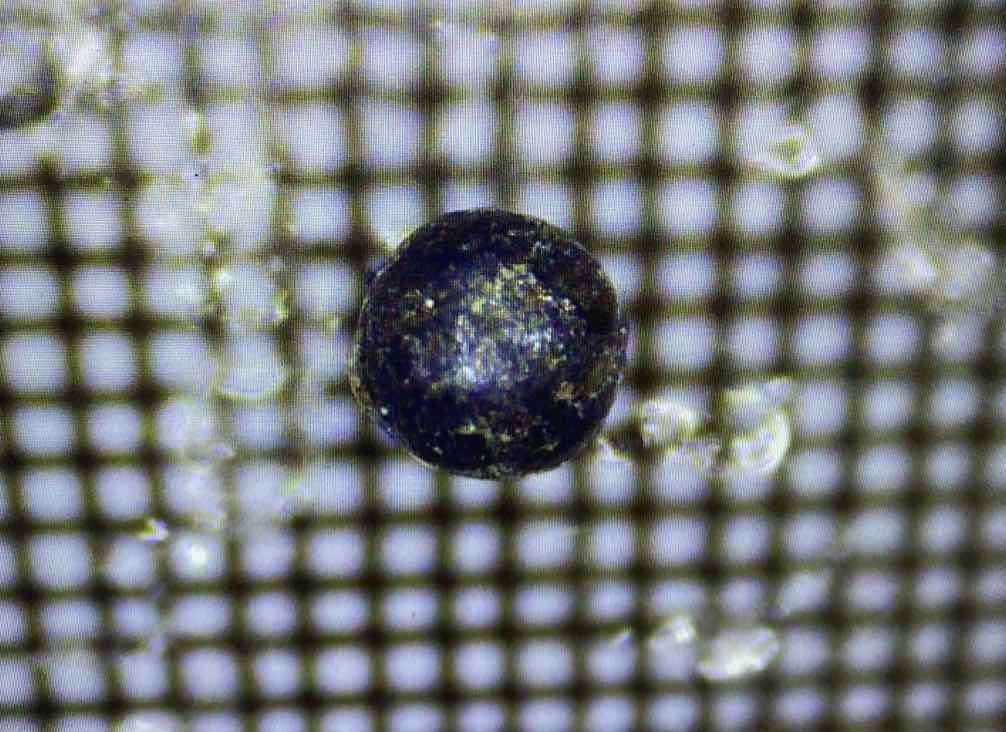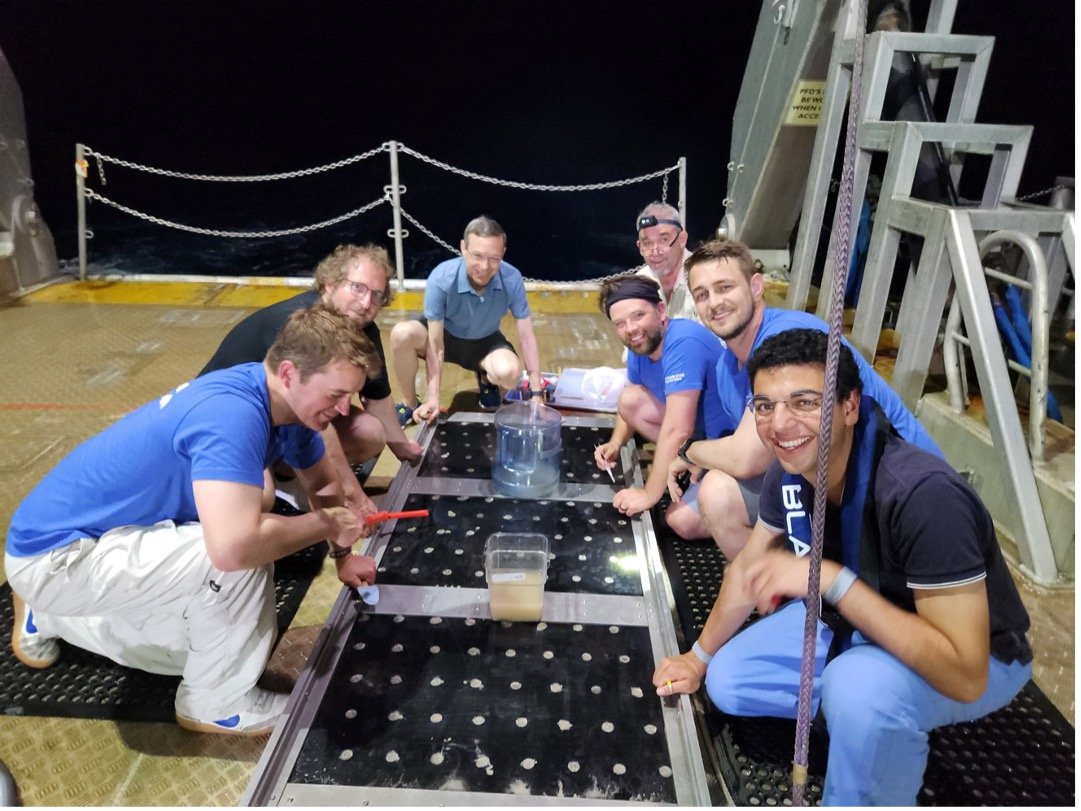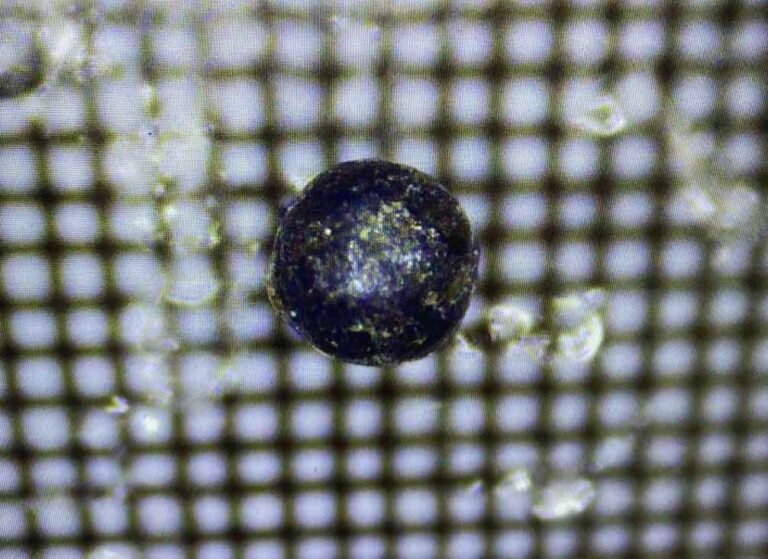This combined 21-23rd installment in an ongoing series of updates from Harvard Astronomer Avi Loeb, head of The Galileo Project, documents the team’s expedition to attempt the recovery of an interstellar object from the floor of the Pacific Ocean. This entry covers Day 12 (June 22, 2023) and Day 12 (June 23, 2023) of the team’s expedition.
Our metallic pearls are in a haystack of geological and biological debris on the ocean floor. Spherules showing up on the microscope image of magnetic particles from Run 8 along the most likely path of the first recognized interstellar meteor, IM1.
The count of spherules from IM1’s site keeps growing. We now have 9 of them, and they seem to have consistent compositions. In the next seven days, we will be hunting for as many magnetic spherules as possible using the sled. Many fans congratulated me for the success of our research team and concluded their message with the greeting: “Happy sledding!”
My wife loved the image of the spherules and asked if I could put one of them on a necklace that she would wear. I explained that their size is a third of a millimeter, roughly the size of the head of a pin, which makes them too small to thread. Obviously, we will be searching for bigger fragments. These have a smaller surface area per unit mass and encounter less friction with air. As a result, they should be distributed farther along the meteor’s path toward the ocean surface. Once we pinpoint that IM1-ocean impact point, we will search for any large object that may represent IM1’s core. If IM1 were a spacecraft from another civilization, finding it could be transformative for the future of humanity.
The sled has a mass of 200 kilograms, and it went to the bottom of the ocean at a depth of 2 kilometers to find particles that are a third of a millimeter in size and a few tenths of a milligram in mass. That we were successful on such a vast range of scales is testimony to the quality of our team members. If I imagine missing any of the team members from the effort, the mission would not have been successful.


Therefore, this morning I sent the following memo to all team members:
Dear Interstellar Expedition team,
After a thorough consultation with Jeff Wynn, we decided to follow the following protocol for the publications coming out of the findings from the Interstellar Expedition:
-
- Our discovery papers will include all members who contributed to the success of the mission. The author list will refer to “Interstellar Expedition team” and include all team members in alphabetical order. In addition to the recipients of this email, we will include support people who were on Silver Star and were crucial for the success of the project (and whose email addresses I will get from Rob McCallum).
-
- Our first set of papers will be submitted to a prestigious and highly regarded journal in the related scientific community.
-
- Jeff Wynn will collate all the input content and data from team members and I will assemble it into coherent papers. Feel free to send Jeff anytime input material that you want to be mentioned in our team papers.
This is a team effort. Let us work together as we convey the data and related analysis to the broader scientific community through peer-reviewed publications.
It is a great pleasure to be working with all of you. If progress continues to be made as expected, we will open the champagne bottle soon.
Avi
It is truly remarkable to witness a team of professionals, some from outside academia, coming together in this heroic effort. Once we collate a large enough mass of spherules and figure out their precise composition, we will celebrate.
Diary of an Interstellar Voyage, Report 22 (June 22, 2023)


Following our daily team meeting today on the upper floor of Silver Star, we established a procedure for processing the material retrieved from our sleds. The latest retrievals include Run 11 with the sluicing device, which selected high-density particles independent of their magnetic properties. The latest Runs 12 & 13 brought back a new collection of corroded iron shards and loads of black powder – where we search for sub-millimeter spherules from the first recognized interstellar meteor, IM1.
I established a counter for IM1’s spherules, which currently stands at 11 – out of which 9 are from Run 8 and ones from Runs 9 & 12. The counter lies as a motivation banner above the workspace of Ryan Weed, who mastered the art of isolating these metallic pearls using tweezers with the help of microscope imaging.
If an equal amount of total mass was deposited per logarithmic spherule mass, we will need to count about a thousand spherules of 0.3-millimeter diameter before we should statistically expect to encounter the first 3-millimeter spherule.
It is difficult to identify visually or separate with tweezers spherules smaller than 0.25-millimeter and so we are using a filter with this mesh size. Moreover, smaller spherules are swamped by the vast abundance of small particles in volcanic ash. There is therefore a sweet spot at around a size of 0.25 millimeter for finding metallic pearls that are visible in our microscope images, easy to handle with our tweezers, and are not as rare as their bigger counterparts.
It was a matter of pure luck that the meter-sized sled could find 9 spherules bigger than a quarter of a millimeter across the 10-kilometer length of Run 8. If the meteor had less than half its size – equivalent to a mass reduction by at least a factor of 8, we would have been blind to the population of spherules because of their statistical rarity.
We were also lucky that the meteor exploded above the ocean, where the sample of tiny spherules was preserved without resurfacing or sedimentation on top of it. If the fireball would have occurred above the Sahara desert, the spherules would have been buried in sand by now as a result of dusty winds.
My Harvard colleague, Xingang Chen, wrote to me that the Chinese counterpart of the idiom “finding a needle in a haystack” is “finding a needle in an ocean”, meaning that something is close to impossible. This indeed fits the mission of our Galileo Project expedition to find tiny spherules from the first recognized interstellar meteor, IM1.
The microscope images of Run 5 indicated smaller spherules than those found in Run 8, but these small spherules are impossible to isolate with our tweezers. Interestingly, line 8 continued farther along the meteor path than line 5 and so its crop included bigger spherules which suffered less friction with air thanks to their smaller area-per-mass ratio.
Given that the meter-scale width of the sled is about a thousand times shorter than the width of the expected IM1 strewn field, I estimated that IM1 must have produced about ten thousand spherules larger than a quarter of a millimeter. This number agrees with the value expected from a detailed theoretical model that I published a year ago with the students Amory Tillinghast-Raby and Amir Siraj.


Altogether, the remarkable findings of IM1 spherules by our team open a new frontier of discovery for the material composition of interstellar meteors. This frontier could shed new light on the evolution of exoplanetary systems as well as on the possible existence of technological space objects from other civilizations. The collaborative spirit and comradery established through this successful mission laid a solid foundation for follow-up expeditions by the same team for years to come.
I was asked by a prominent podcaster yesterday whether I have questions for a famous science popularizer that he will host, and I replied that, as of now, I am busy finding answers to big cosmic questions on ocean floors. This demanding activity leaves me little time for small talk.
Diary of an Interstellar Voyage, Report 23 (June 23, 2023)
On April 14, 2022, the Harvard Crimson magazine published a large feature article at this link about the Galileo Project and its expedition to the Pacific Ocean to retrieve the relics of the first recognized interstellar meteor, IM1. The meteor moved faster than 95% of all stars in the vicinity of the Sun and survived under more extreme stress from friction on air than all 272 meteors in the CNEOS catalog of fireballs compiled by NASA over the past decade.
In the Crimson article, a so-called “Harvard astrophysicist” who is in reality affiliated with the Smithsonian Astrophysical Observatory, named Jonathan McDowell, is quoted as saying: “I’m just not optimistic that, as currently formulated, it’s going to be terribly scientifically productive,” he says. “That’s my take, but, you know, I’d love to be wrong.”
The article went on to say, “McDowell agrees that there is some jealousy surrounding Loeb and the Galileo Project. He also believes that “there is a level at which the journalistic community should be a little more judicious and not just go for the clickbait of ‘Harvard professor says,’” but look into the kinds of research that garner less public attention.”
This morning, a conversation with the expedition team member and newly-minted scientist, Jason Kohn, reminded me of this article. I told Jason that I do not need to make my case in words. I can simply show the photo I took at 1 AM last night of the new spherule unraveled by Ryan Weed. A photo is worth a thousand words. The spherical metallic marble looks like the Earth in the background mesh of spacetime. We were lucky to retrieve it from a depth of 2 kilometers at the bottom of the Pacific Ocean, where it rested 9.5 years after arriving there on January 8, 2014. It is a molten relic that was created when the surface of IM1 was exposed to the extreme heat associated with entry to the lower atmosphere at 20 kilometers above the ocean surface. All I need to say now is: “What a wonderful world!”
That we were able to collect a sub-millimeter object from the bottom of the Pacific Ocean near Papua New Guinea near the fireball coordinates of IM1 is a testimony to the success of the scientific method despite the nay-sayers. I told one of them just a couple of weeks ago, “There is no need for you to criticize our expedition since we are not taking any funds away from you. Just sit back and relax. You could always say: `I did not expect you to succeed‘ in case we would return empty-handed.”
By now, we know that we will not be coming back empty-handed. We already found 11 metallic pearls of molten iron with shapes turned spherical by surface tension and friction on air, a common product of meteor fireballs. The spherules we discovered at the IM1 crash site are made mostly of iron and are definitely not biological in origin. Their non-existence in control regions away from IM1’s site suggests that they are likely associated with IM1.
Upon my return, we will use the best instrumentation in the world to analyze the composition of these precious metallic pearls and date the duration of their journey in interstellar space through gamma-ray spectroscopy of their radioactive isotopes.
Multiplying the duration of the journey by the inferred velocity of IM1 outside the solar system might allow us to circle the candidate stars from where IM1 may have originated. That feat was never possible in human history because IM1 is the first large package that we had witnessed to be delivered to our doorstep from outside the solar system. Its materials are now in our possession.
What a wonderful world, indeed.
Avi Loeb is the head of the Galileo Project, founding director of Harvard University’s – Black Hole Initiative, director of the Institute for Theory and Computation at the Harvard-Smithsonian Center for Astrophysics, and the former chair of the astronomy department at Harvard University (2011-2020). He chairs the advisory board for the Breakthrough Starshot project, and is a former member of the President’s Council of Advisors on Science and Technology and a former chair of the Board on Physics and Astronomy of the National Academies. He is the bestselling author of “Extraterrestrial: The First Sign of Intelligent Life Beyond Earth” and a co-author of the textbook “Life in the Cosmos”, both published in 2021. His new book, titled “Interstellar,” is scheduled for publication in August 2023.

